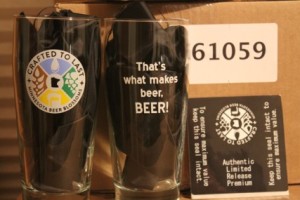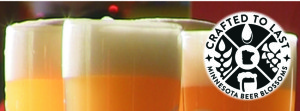Roots
now browsing by category
Structure and Flow
 Crafted to Last – Minnesota Beer Blossoms is my first feature-length film. I had created feature-length pieces while producing Art Temple and The Temple Tapes for public access on MTN, but the only way to present longer pieces in a 28.5 minute time slot was to make a multi-part series. The 4 part Patriot Series (TT #17 – #20) is an early example. Made from late 2001 through July 2002 these episodes were part of our response to the fall of the WTC in NYC in September 2001 and the fear mongering that followed in its wake. These videos are haunted by the ghost of those chaotic days. The Patriot Series was intentionally provocative from the get-go and has become even less mainstream and politically correct during the 12-13 years since it was in the Saturday night broadcast rotation on Channels 17 and 33 in MPLS.
Crafted to Last – Minnesota Beer Blossoms is my first feature-length film. I had created feature-length pieces while producing Art Temple and The Temple Tapes for public access on MTN, but the only way to present longer pieces in a 28.5 minute time slot was to make a multi-part series. The 4 part Patriot Series (TT #17 – #20) is an early example. Made from late 2001 through July 2002 these episodes were part of our response to the fall of the WTC in NYC in September 2001 and the fear mongering that followed in its wake. These videos are haunted by the ghost of those chaotic days. The Patriot Series was intentionally provocative from the get-go and has become even less mainstream and politically correct during the 12-13 years since it was in the Saturday night broadcast rotation on Channels 17 and 33 in MPLS.
Embedded within the Patriot Series is one of the most potent story lines of The Temple Tapes, the quest for the Bush Altar. This thread is emblematic of the linear aspects of the long-running TV series, especially in the immediate post-911 era. Many of our local artist friends felt as though the emergence of international terrorism on US shores had undercut their work and rendered it less relevant. It was 180 degrees different for the Temple Tapes. We had been working underground since suspending the Art Temple series and the Voices from the Well Open Microphone. We had successfully twisted the messy result of the 2000 Electile Dysfunction into a victory for the Art Temple Mandala, a small cell of undercover shamans experimenting with chaos magick, social commentary and absurdist satire. We hit the underground running.
The Temple Tapes ran for more than 60 episodes and almost 7 years on public access (1999 – 2006) in Minneapolis. It was my second TV series. The short-lived Art Temple (1997- 98) was the first. Both were made with Neil Levy/Meatman/Bill Carson/Tom Rifle without whom Transreality TV would not have been possible. I had a lot of fun making video with Neil. While editing I treated him like an oracle or a channel. I’d find the golden nuggets of dialogue then string them together with my side of the discussion and additional video/music interludes. After he moved to AZ it got a lot more complicated to continue the series, but we kept it going for quite a while long distance. Thanks, Neil. It was a pleasure.
In many ways, the Temple Tapes was a model for Crafted to Last – Minnesota Beer Blossoms. The basic structure of the two works are essentially the same. Both story lines relate narratives that unfold on various time scales. Both feature a mixture of oral story telling and commentary with music and visual segments. Although the topics are quite different, the flow and rhythm of the rhetorical back and forth is very similar. The Water and Beer Interludes in CTL owe quite a bit to earlier work mixing dialogue with music, sound, and image. The main contribution of the public access experience to making the documentary was confidence. I knew I could make the film I envisioned in my mind and that is precisely what I did.
This Time in History
 Timing is everything and good location a plus. When I first met Jesse Brödd and Jason Sowards to talk about video and beer, they were just about to implement their plans for a tap room in the back of the garage at Harriet Brewing Company. Back then, I was working at the VA, down by Minnehaha Falls and the airport. The brewery was close by and I could easily stop by once a week, on my way home or during lunch, to shoot video of the build out of the new tap room.
Timing is everything and good location a plus. When I first met Jesse Brödd and Jason Sowards to talk about video and beer, they were just about to implement their plans for a tap room in the back of the garage at Harriet Brewing Company. Back then, I was working at the VA, down by Minnehaha Falls and the airport. The brewery was close by and I could easily stop by once a week, on my way home or during lunch, to shoot video of the build out of the new tap room.
Harriet was the first to sign on to the project. It was an auspicious start because immediately I had a chance to capture video of a brewery adding a tap room. The tap room time progression sequence was a critical visual counterpart to the narratives about tap rooms and the reform that made them legal in January 2012. That it became possible during the first meeting with brewers interested in joining the documentary was serendipitous timing. It set the pace and planted the seed.
Later that Spring, talking with Rob Miller and Sarah Bon Vallet it became clear that we had an opportunity to make a time progression sequence of the installation of the entire brewery at Dangerous Man. I thought back to my discussions with Joe Pond from Olvalde Farm. Particularly the distinctions he draws between his agricultural approach and the industrial models followed by most other breweries. I wanted to balance the focus on growth in the beer industry with the agricultural aspects of the ingredients. The barley field time progression sequence shot from late Spring until early Fall 2012 at Olvalde Farm was the visual complement to the urban/industrial sequences of tap room and brewery growth at Harriet and DMBC. It would not have been possible without Carlus Dingfelder, Joe’s father in law. Video of hops would come later. At Hippity Hops Farm with Matt Hall from Lift Bridge.
Everything is about time in Crafted to Last. The narratives, the images, the music. Place is important, but it kind of took care of itself. The documentary is about Minnesota because it was made here, many of the people in the film were born here, and some have deep family roots in the state. The film is about a specific time in Minnesota beer brewing history and the industry was expanding very quickly at that time. The 3 time progression sequences and many time lapse segments were used to visually evoke the fast moving MN beer scene while the movie was being made. We shot time lapse at these locations: The Brew Day Time Lapse with Greg Smith at Leech Lake, Rob Miller at Dangerous Man, Waxing Old Friend at Indeed, various Art Hangings and Tap Room Opening at Harriet, and tank delivery at Northbound.
Because beer is so closely tied to human history and nostalgia, it was important to couch the current era in historical context. Prohibition, consolidation, the craft beer movement, regulatory reform, and a renewed interest in local businesses all of these contributed to the cultural and economic context in which Minnesota beer began to blossom in 2012.
When Ted Marti from August Schell’s Brewery agreed to participate, we welcomed his unparalleled historical perspective. The narratives of the Hoops brothers with their cohorts Tim Nelson (Fitger’s Brewhouse) and Pete Rifakes (Town Hall Brewery), provided a more recent focus on locally brewed beer, brew pubs and growing a community of craft beer drinkers in Duluth, MN. Personal and neighborhood histories intersect for Bob Nihart (Reads Landing Brewing Co.), the brew pub, and the town of Reads Landing. These were the historical context in which the film portrays the expansion of the brewing sector from January 2012 forward.
The drawing above is one of the first renditions of the complete film in any tangible medium. The written out colors refer to the code for identifying clip content in the editing software. It shows a twisted flower blooming from a seed that has been nurtured by laws, culture, water, dollars and effort. The bloom is upside down in the lower left corner and the seed in the upper left. To the right are those things that feed the transformation of the seed into the flower. In the film there are many different seeds and at least as many blooms. The seed of home brewing for each featured brewer and the flush of new breweries, for example. The sub-title of the film came out of this drawing. Minnesota beer blossoms.
The video diary clip celebrates one of the first milestones in making the film. I had shot conversations at the first 4 breweries and was planning shoots at 4 more. At the time I recorded this commentary, 8 breweries was the upper bound for the film because I was still planning to include people from other businesses that had been positively impacted by the expansion of brewing. On camera I’m talking about the transformation of my beer cellar from foreign to Minnesotan. Off camera I’m drawing pictures of seeds transforming into flowers using elements coded for types of video content. On location we were capturing that time in Minnesota brewing.
Right now you can watch my home brewed film and drink Minnesota beer at a location near or far during the CTL Film Tour 2015.
Spent Video & Compost
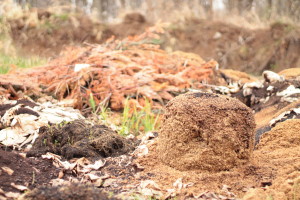 Perhaps it should have been more obvious that spent grains are a huge concern in the brew house. Brewing leaves an abundance of nutrients in the grains husks and residue. Many breweries channel their spent grains into raising live stock and eggs. Others provide them to bakeries and local sausage makers. Some work with composters who referment the spent grains to generate heat while creating high quality soil that he used in his landscaping business.
Perhaps it should have been more obvious that spent grains are a huge concern in the brew house. Brewing leaves an abundance of nutrients in the grains husks and residue. Many breweries channel their spent grains into raising live stock and eggs. Others provide them to bakeries and local sausage makers. Some work with composters who referment the spent grains to generate heat while creating high quality soil that he used in his landscaping business.
I met Russ Henry when he was picking up grains from Harriet Brewing Company and I was getting shots of the brewery as work on the tap room began. The story of Giving Tree Gardens, compost, and local brewing was part of the documentary because it shows how growth in beer making positively impacts other local businesses. I actively pursued this angle for quite a while. Even shot video for Hippity Hops Farm featuring George Shetka talking with Matt Hall from Lift Bridge about local hops production. Ultimately these stories were cut from the film but have found a home on line.
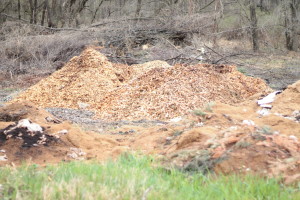 The way that Russ talked about making compost and soil had a major impact on the way I handled the editing process for Crafted to Last. I began to think in terms of spent video and refer to certain folders on the hard drive as video compost. Knowing that the video cut from the film would have another chance when I began to work through the compost piles at some later date made it a bit easier to make the first harsh cuts. The compost model ran deep. At one point Russ tells us about his “strategic piles” and how important they are to his process. I took this directly to heart and sorted the video compost at the source; strategically.
The way that Russ talked about making compost and soil had a major impact on the way I handled the editing process for Crafted to Last. I began to think in terms of spent video and refer to certain folders on the hard drive as video compost. Knowing that the video cut from the film would have another chance when I began to work through the compost piles at some later date made it a bit easier to make the first harsh cuts. The compost model ran deep. At one point Russ tells us about his “strategic piles” and how important they are to his process. I took this directly to heart and sorted the video compost at the source; strategically.
One of the more strategic piles is the video diary where I recorded my thoughts, inspirations and celebratory rituals as the film began to take shape. I’m mining that pile to support the CTL 2015 Film Tour. There are still many more clips steeping and fermenting in the video compost piles. We’re in for a long haul. Warm yourself as we decompose spent video. More refermentation is happening now.
Its A Documentary
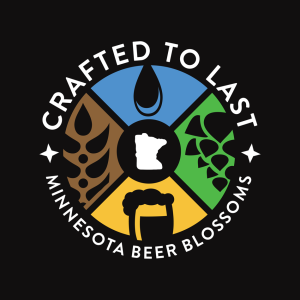 Early on, my main purpose was simply to capture the initial phases of the social and economic impacts of reformed beer distribution laws in Minnesota. I was not yet certain what form the finished video would take, but I knew that the sooner we got the cameras running, the better. Production began in January 2012, by April of that year it had become clear that I was making a movie, and by June the working title was Crafted to Last.
Early on, my main purpose was simply to capture the initial phases of the social and economic impacts of reformed beer distribution laws in Minnesota. I was not yet certain what form the finished video would take, but I knew that the sooner we got the cameras running, the better. Production began in January 2012, by April of that year it had become clear that I was making a movie, and by June the working title was Crafted to Last.
I wanted the film to reflect the kinetic tension that was surging through the brewing community in the wake of the newly enacted Surly Pint Law. Everywhere I looked around the MN beer scene, something was being built, expanded or improved and everyone had quite a few opinions about all of it.
The ideas was to create a film that looked as though all I did was set up the cameras and turn them on. I thought that this approach would underscore the growth in the brewing sector because it implies that the blossoming of Minnesota brewing could be captured in real time; as if it were happening right before our eyes. Which is, in fact, precisely where and when this film happened.
The conversational setting for the audio narration track of the film imparted a similar sense because it let the people in the film narrate with their own words. Because the featured speakers are talking to each other the audio track could be fashioned as one extensive and winding conversation. It tells a lot of stories and weaves them into a larger scale narrative about what happened when beer distribution laws changed in 2012 and what it meant for Minnesota brewing.
The first conversation segment was shot in the tasting lounge at Harriet Brewing Company on March 30, 2012. Location shoots at Olvalde Farm (April 29), Leech Lake (May 19) and Brau Bros Brewery in Lucan (June 3) followed and the ball was rolling. My initial goal was to recruit 4-6 breweries to the project and include 2-3 local businesses that had benefited from the emergence of craft brewing in Minnesota. The conversation with Russ Henry from Giving Tree Gardens and Paul Johnston, then with Harriet Brewing had already been shot and edited. It was time to celebrate, so I cracked this bottle of 15.
That the video diary clip celebrates the 4th conversation segment is significant. Not only because I thought 4 breweries was enough to make a movie, but also because the entire film was designed around the numbers 3 and 4. Specifically in terms of the alchemical equation so often remembered as the Axiom of Maria. Carl Jung found this narrative structure, along with many others, in virtually every single text he analyzed. He looked at that result and made conclusions about human psychology. I looked at the result and understood something about narrative structures that attract human beings to the story being told.
Crafted to Last Blossoms
The glow from the premiere of my film last July in Minneapolis and Duluth has receded, but the embers of many memories still smolder. Especially when I’m visiting one of the many fine establishments in the neighborhood and chat with someone that has seen the film. More often they wish that they had.
my film last July in Minneapolis and Duluth has receded, but the embers of many memories still smolder. Especially when I’m visiting one of the many fine establishments in the neighborhood and chat with someone that has seen the film. More often they wish that they had.
We talk about beer and how the every day lives of so many beer drinkers all across Minnesota have been so greatly enriched by the range of breweries and beers currently available for perusal and fussing. We exchange questions of how long it will last and wonder aloud if this will be the year we are allowed to buy beer on Sunday without crossing the border.
Because I have lived so long with my film and because it captures so many aspects of the threads of conversation woven through the tap rooms, breweries and festivals it is inevitable that I refer to the film, as often as not, as we chat over our beers. I have heard variations on the 16 story lines that make up the film at least as many times since production closed in 2014. A quick glance around the Minnesota brewing business or a brief sampling of local news and cultural media show that Minnesota beer continues to blossom.
The 2015 CTL Film Tour is in the planning phase. If you, or someone you know, are interested in hosting a screening of the film sometime between June and November 2015, contact us and we’ll set it up. Showings have been confirmed at 3 metro locations, Lift Bridge, Northgate and Day Block. Additional showings, including venues in Duluth and Rochester, are on the horizon. Stay tuned.
The Film Tour will also be a venue for new video. Most will be culled from the spent video from making the film and the video diary clips I recorded while making the film. I hope to be making some new video, too, but that is another story. Let’s get the new ball rolling by reaching back to the inspirational trip to MI and IL that sparked the film. Plus a question about regional beer that is much bigger than terroir.
After Action Report
The world premiere in Minneapolis and the Duluth debut are behind us. Time to take a breath, relax, assess and learn lessons.
Spent a day relaxing with Mary, Jerry and Gulin traveling up and down Hwy 61 and Northshore Drive. Plenty of breathing. A little bit of beer and a chat with Nick as he poured dangerously good beers for the crowd and the tour. Later at the hotel it rained for a bit, then gave up a double rainbow over Duluth and Superior. We talked all the while about many things, but beer and Crafted to Last were a recurring theme. Ted Marti is right when he says, “That’s what makes beer, beer!”
Driving back from Duluth I began to mull it over in my head. Gulin was engrossed by the grant proposal she’s writing and we had some tunes that I like, so the environment was conducive to mental assessment of recent events. At first it was pelting rain, fog and road spray and all I could think about was driving the car, but that faded. Slow and spotty at first, but I needed sunglasses soon enough. Traffic was not insignificant, but it provided room for contemplation.
In almost every way the release of Crafted to Last at the world premiere in Minneapolis and the Duluth debut were successful. We got a lot of attention. At least 3 times during our visit to Duluth and the Northshore, we were told by people we met that they knew about our film and wished they could have seen it. I assured them that there will be more opportunities to see my documentary in the near future. I’m already at work on making it happen in a location near you very soon. Most of the feed back from viewers has been positive, and the mild criticisms have been constructive, rather than dismissive.
I owe a lot to Andrew Schmitt and MN Beer Activists for helping to promote and getting the word out that Crafted to Last is a film worthy of the Minnesota beer community. Big thanks also to Dustin Brau, Lynn Richason, Dan Schwarz, Joe Pond, Broc Krekelberg, Amy Johnson, Jamie Robinson and Jeff Hahn because they not only came to the Premiere at the Parkway, but were also very helpful in promoting the film. Most of them are featured in the movie, too. A huge part of the audience at the Parkway on July 19 were not from the beer community. They were personal friends and supporters of the Campaign for Music.
If there is one thing I regret in retrospect it is that I did not do a better job connecting with the beer-lovers in Minnesota with regard to the opening of the film. I should have made a greater effort to get the featured breweries and their fans interested in seeing the documentary. I assumed that they would be aware and excited to see the only film about the Minnesota craft beer movement and so did not spend enough time and energy whipping up support among the community that is at the heart of the film. I will not make that mistake again.
One of the better results from the release screenings has been the connection with Marissa and Lee from Northland Beer. We met while I was videoing beer pours in the tap room at Fitger’s Brewhouse and Grille. They were two of the few that managed to make it to the Duluth Debut and were very supportive in promoting the event at Zinema 2.
World Premiere
 The world premiere event held last Saturday night in South Minneapolis was a long time coming. I enjoyed it a great deal and from many perspectives. The crowd that attended, performed – live or in the film, supported and cheered was comprised of people from all the multiple communities in which I have been welcomed since coming to Minneapolis in the early ’90s. Standing on stage waiting for the sound tech to signal me that the microphone was live, I understood something special was happening. I realized that the Venn Diagram of all those communities that I carry at the center of myself, had been manifest in the audience I was readying to welcome to the show. It is not often that I experience such a moment and I am indebted to all of you for making it so.
The world premiere event held last Saturday night in South Minneapolis was a long time coming. I enjoyed it a great deal and from many perspectives. The crowd that attended, performed – live or in the film, supported and cheered was comprised of people from all the multiple communities in which I have been welcomed since coming to Minneapolis in the early ’90s. Standing on stage waiting for the sound tech to signal me that the microphone was live, I understood something special was happening. I realized that the Venn Diagram of all those communities that I carry at the center of myself, had been manifest in the audience I was readying to welcome to the show. It is not often that I experience such a moment and I am indebted to all of you for making it so.
Now that the film has been released and people have seen it, I no longer control my creation. Maybe its because I tuned in Young Frankenstein last night while scanning the channels and relaxing a bit, but I think it probably goes deeper into the nature of creating stuff for public consumption. It is your ball of wax now. Make of it what you will.
The next stop is the debut in Duluth on July 25 at 9 PM. Tickets available at the Zinema 2. This a great way to get a head start for the All Pints North Beer Festival the next day. The documentary includes 3 of the features, Tim Nelson, Dave Hoops and Nate Berndt, talking about the supportive efforts of the MN Craft Brewers Guild, particularly with regard to the Minnesota State Fair.
True Roots #3
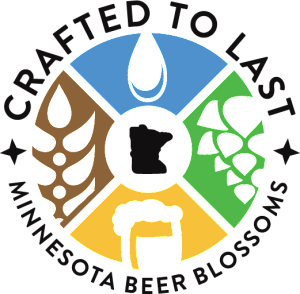 The science, calculation, and design that permeates parts #1 and #2 of the True Roots series is a way of seeing the world that makes me feel comfortable. But it is not the whole story. Theory needs experiment, culture needs doing and observation is but one perspective. There is also this.
The science, calculation, and design that permeates parts #1 and #2 of the True Roots series is a way of seeing the world that makes me feel comfortable. But it is not the whole story. Theory needs experiment, culture needs doing and observation is but one perspective. There is also this.
In 1993 I moved to Minneapolis, MN from St. James, NY. My boss made me a deal I couldn’t refuse and because I didn’t know what else to do I followed him to the University of Minnesota in the Twin Cities. It was less than a year since my wife’s death by auto accident and I was still incessantly certain that my lab mates and I were ready to figure out how human bodies regulate food metabolism, explain it to the world, and move on to the next puzzle.
But I came to Minnesota with another agenda as well. I wanted to get out from behind the bench; stop observing; participate. Experiment with myself. Not rats in all those cages or the purified molecules improbably suspended in exquisitely engineered tubes of precisely tempered glass.
I needed to meet a different sort of expert. Someone that knew details about all the stuff I had not yet imagined or even knew existed alongside numbers and fact. I did not know what I wanted to do, but I knew I wanted to do something more sit Rodan-like and Think.
Then
one day I saw in the City Pages a listing that read: “Poetic Justice”. It was an “open-mic” in a place of which I had never heard in a part of town I had never seen. In a glance I began to imagine all those words scribbled, typed and processed by my hand might thought of as “poetry” if you squinted just so. The next week I put on my leather, gave the dogs a few treats, and drove fast across the tracks where I met the most perfect strangers for the very first time. I mean, they didn’t know me from shit or shinola. I could be anything myself would allow. I felt like Schrodinger’s cat contemplating the outcome few physicists will endure. You see?
Perhaps it is the Cat that decides shred their box from within or to confuse us with death. This was not about scientists predicting tomorrow or modeling the past by objective observation of statistical truths. It was about feeling and the choice to become or be gone.
A few years later the open mic moved to downtown MPLS, become “Voices from the Well”, and I was a regular because it felt like home. At least the bar served Bass Ale and a local beer, too – Summit Extra Pale Ale – that was often better than the Bass. Eventually, I was co-hosting with LeNor Barry, meeting a lost Lamas, and listening to Chris Shillock deliver his poems with the deft certitude of a practiced predator and the sweet grace of mindful human. Terry Folz, Laura Winton, Jeff Jasin, Lyle, Jim, Liam, Kamp, Andrew, David, Sharon and so many other name not posted. It is among these people that I was able to regain my footing and begin to see myself walking forward; moving on to the next puzzle.
On July 19 this story comes full circle when I return to these roots and respect how they’ve grown. This is where my part of Crafted to Last comes from and it is distinct from those of the beer people in the film and their fans. My goal is to bring these together because I think that is how cultures are formed.
True Roots #2
At first glance, the previous post about bioswitches and amplification may not seem all that relevant to local craft beer, film making, or a crowd source funding campaigns. But I see similar patterns and mechanisms at almost every aspect of current expansion of the local/craft brewing sector. Perhaps a few examples will help to clarify.
Most, if not all, of the brewers that I spoke with while making Crafted to Last started by brewing at home. Prior to the reform of beer distribution laws, it was more difficult for a home brewer to grow their endeavor into a viable small business. Changing the laws in ways that smoothed the paths from home brewing to commercial brewing amplified the number of breweries in Minnesota. There are many ways to describe this expansion, but I see it as a form of bioswitching that works at the social, cultural level.
Reform of the distribution laws created a pathway, but to make it work – to flip the switch – requires fuel. In a capitalist system, fuel is money. At the cellular level, bioswitches are built from nutrient cycles that couple the energy released by breaking down fuel molecules to the building up of molecules and cellular structures. One of the main aspects of the Surly Law was to allow a brewery to sell beer directly to their customers in a tap room. That is, it created an economic cycle where cash could more effectively flow from the community of beer drinkers to the local breweries. So not only does the expansion of craft brewing look like an amplifying bioswitch, it is also built on feed-back loops and cycles – just like bioswitches.
Bioswitches were first described in relation to the cell cycle. The simplest description of cell cycle is the switching of a cell between growth and maintenance. In the context of the living being within which the cells exist, the balance between growth and sustaining requires connection to other cells and other organs. When your liver grows, it will stimulate the expansion of the circulatory system to keep it fed and to carry away the waste products. Same for the nervous system, its growth goes right along with the expansion of the liver. Same for the growing craft brewing sector in Minnesota. It has not grown in isolation and because local brewing has stimulated the growth of other local businesses it is a sustainable form of economic expansion. These businesses help the brewery clear away waste – primarily spent grains – and supply the raw materials needed to make and sell beer. Farmers, advertising agencies, musicians, and independent film makers have all been stimulated by the expansion of craft brewing in Minnesota. That is a healthy and sustainable way to grow and it is based on the cycling of cash and cultural switching mechanisms.
Considering the Campaign for Music from this perspective, it is clear that it is designed as a cash cycle that couples the growth of the craft brewing community to stimulation of the local music community. At the root the Campaign for Music is a cultural amplifier because it couples my effort in making the film with the interest and money of the beer community to create public events and benefit local musicians.
I built the switch and made the documentary. Its up to each of you to flip the switch by contributing a few bucks to the Campaign for Music. Please. Do it today.
True Roots #1
Those of you that have taken the time and made an effort to investigate, read and observe the content on this web site already know that before I started making Crafted to Last, I worked as a research biochemist for almost 20 years. My main interests were trying to understand how biological systems regulate fuel metabolism in response to changing environmental conditions. Because I began that journey in the early 1980’s the focus was on proteins and enzymes rather than the genetic emphasis that dominates such discussions today. Instead of a long and interesting digression, let me just say it plain: enzymes are amazing molecules that make chemical reactions go a lot faster and provide a means to regulate those reactions. They introduce mechanisms of order into the chaos of random spontaneous chemical reactions.
One of the more intriguing enzyme mechanisms I’ve come across is bioswitching and signal amplification. This relates to regulation of human fuel metabolism because when you eat something after not eating for more than 6 hrs or so, within 5-10 minutes of swallowing the first bite the flow of biological fuels, specifically carbohydrate, fat and protein, are redirected almost simultaneously. One sad fact of medical research is that the funding agencies tend to favor highly reductionist inquiries and this forces people to consider their chosen target of investigation in isolation from other influences. Not in all cases, but in enough that concepts like “whole body regulation” or “systems biology” were a hard to sell. Especially when funding rates for basic research were plummeting to all time lows. Everything I was finding in my research and the studies of my peers was pointing toward initiating projects aimed at unifying the detailed results of reductionist programs into a more wholistic and systemic perspective. Moreover, the computing and data storage advances were making it feasible to start addressing these questions in a statistically relevant way and that is the foundation of the scientific method. This is still happening even though I am not a major part of it any more from the strict defined confines of a the academic research community.
Bottom line: The Campaign for Music was designed as a cultural switch. A little input from each of you will be amplified into a benefit for everyone and for local musicians in particular. Push the button. Flip the switch.



